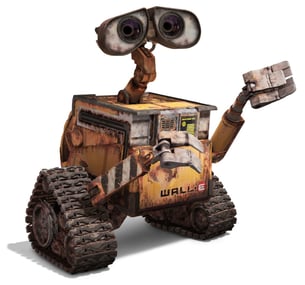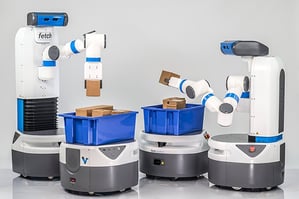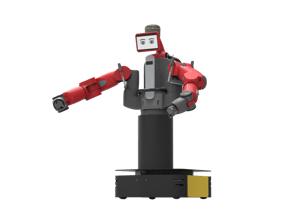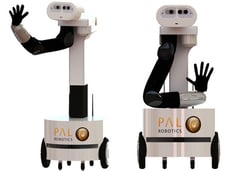2015 Year of the Mobile Manipulator?

Posted on Jun 09, 2015 5:08 PM. 4 min read time
I do spend a lot of time on the Internet following the trends in robotics. As collaborative robots have experienced a fair amount of hype over the last two years or so, it just stands to reason that something new must be coming along. With a bunch of small and large companies launching their own cobot models each having special and unique features and now that the market for collaborative robots is steadily increasing in popularity, something else has to be just around the corner, right?! Well, what I figure is that mobile manipulators just might be that next big thing.

I am pretty sure that absolutely everybody who watched Wall-E wanted to have their very own mobile robot. Seriously though, Wall-E is a mobile manipulator. Since it is a cartoon, a couple of physical and engineering considerations have been put aside, but basically it is a robot that can move itself around, it has robotic arms and end effectors to grab stuff. He has a human-like vision system to see where he is going and what he is doing.
Now, real life mobile manipulators are somewhat less appealing at the moment and are definitely less clever than Wall-E, however, we are getting there. With more mobile manipulators coming out on the market for a bunch of different applications, the knowledge and common intelligence is growing fast. Some companies are planning on building a complete robotic cell solution while others will give the choice to the customer to build their very own mobile manipulator platform and add on all the different devices they need for their applications.
With major robot manufacturers being a little laid back on the newer technology, this provides some space for smaller enterprises or startups to develop their product. There are a couple of different concepts that are out on the market. I would say that most of them are more oriented towards logistical applications, but some are still pretty general. Anyway, here's a short list of the mobile manipulators currently on the market.
Fetch Robotics

Fetch Robotics has a mobile manipulator simply called ''Fetch". The robot is on a mobile platform that is specially designed for logistic or warehouse applications. The 7 DOF robot arm has a built-in modular gripper that can carry a 6 kg payload. The robot is equipped with 3D vision so it can locate the object and grasp it properly. The robot is mainly used for handling applications. It even has an assistant that follows him around and carries the actual ''order'' that Fetch is picking. A monitoring system can also be used to monitor the position of each robot in the plant. The cobot can be taught by demonstration or programmed with ROS packages.
Clearpath Robotics

The Canadian based Clearpath Robotics recently launched an ''indoor'' mobile manipulator that is completing its product line. In fact, Clearpath already has mobile manipulators to use on hazardous terrain with their Grizzly and Husky mobile manipulators. With the addition of their recent Ridgeback, they open themselves to a wider range of applications. The Ridgeback is built for carrying a Baxter robot, but can also be adapted for other robot models. The platform is still based on a ROS programming method and can be bought with different sensors and options. The main goal of the robot is to transport Baxter for research applications. However, with the enlarging trend of mobile manipulators in logistical applications, I guess, they will sell a few of these for use in warehouses.
PAL Robotics

PAL Robotics have a mobile manipulator platform called TIAGo. The robot looks a lot like Fetch in terms of its basic principle. A mobile platform with a built-in robot using a single arm and a vision system. However, the end effector is way different. It literally looks like a human hand instead of a parallel gripper. However, the payload is a lot smaller (3 kg) and I haven't seen it work yet. PAL also has other service robots that are not exactly mobile manipulators, but are still pretty advanced in terms of technology.
All these projects and perhaps more have come out or will come out during 2015. So, the way I see it, mobile manipulators are really just beginning. Notice that other collaborative robots might be considered “mobile manipulators” since you can move them around on wheels, however, they cannot do it autonomously as the ones discussed in this article can. I haven't read about the different safety requirements for these robots, but they are basically used without fencing, so they should use the same rules and regulations as collaborative robots. The fact that most of them are equipped with sensors reduces the risk of getting hit by one of these robots thus making them a little safer than a blind robot. In any case, mobile manipulators are really growing fast and can potentially change a whole section of the logistic market. Keep your eyes open for the next mobile platform launch.








Leave a comment